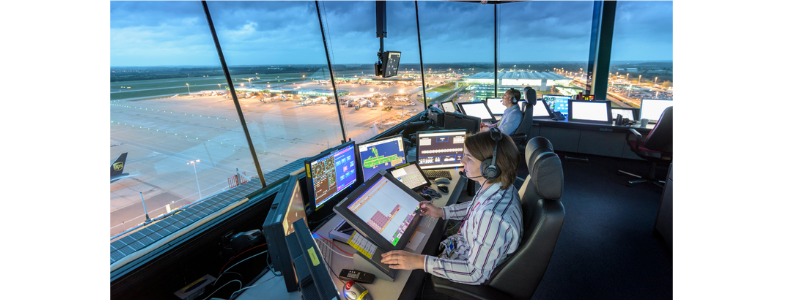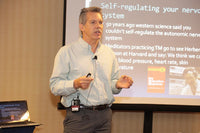
High Stakes, Low Control: Why Air Traffic Controllers Are the Canary in the Coal Mine of Workplace Stress
Lately, air traffic controllers have been making headlines — and not for good reasons. Staffing shortages, outdated equipment, and long hours spent staring at computer monitors are just a few of the stressors currently plaguing this vital profession. Even the Federal Aviation Administration admits that not enough new controllers are graduating from training programs to replace those retiring or leaving the job. When you consider how much responsibility air traffic controllers carry, it’s not hard to see why the profession is widely considered one of the most stressful in the world.
But what makes it so stressful, exactly? One way to understand the intense strain is by looking at the balance — or imbalance — between responsibility and control.
In my 30+ years in the stress management field, I often return to this equation:
Stress increases when responsibility rises but control does not.
The reverse is also true — when you have high control and high responsibility, stress becomes much more manageable. Take airline pilots, for example. They shoulder a tremendous amount of responsibility — hundreds of lives at a time — but they also have a high degree of control. They make real-time decisions, manipulate the controls, and have direct influence over the outcome of every flight they operate. This balance is what keeps stress within manageable limits.
Now consider the air traffic controller: enormous responsibility, but far less control. They're responsible for guiding pilots safely through the skies, but they can’t physically fly the plane or guarantee the pilot will follow instructions precisely. They're reliant on technology, communication systems, and compliance — all variables outside their immediate influence. That’s the textbook definition of a high-stress job.
But this isn't just a modern problem. Flash back more than 30 years to the early 1980s, when air traffic controllers were also in the news — and for very different reasons. In 1981, thousands of members of PATCO, the Professional Air Traffic Controllers Organization, went on strike, demanding better working conditions, shorter hours, and updated equipment. At the time, their profession was already notorious for causing burnout, substance abuse, and even premature death.
But these workers were federal employees, and striking was forbidden by law. President Ronald Reagan responded by firing over 11,000 striking air traffic controllers — a moment that would change American labor history. Many see this as a pivotal turning point in the decline of union power in the U.S. Since then, unions have never quite regained their footing.
In the aftermath, the stress on the remaining air traffic controllers intensified. With so many trained professionals gone overnight, those who remained were asked to do more with less. And here’s where the story gets personal. At that time, I had already developed several tools for managing workplace stress, and I saw an opportunity to help. I reached out to senior officials in the government agency overseeing these workers and proposed that they use some of my stress-reduction programs to support their staff.
The reply was chillingly honest:
“If management purchases your products for the workers, it will be a tacit admission that their jobs are stressful — and we don’t want the unions to be able to make that claim.”
Translation? Admitting stress was politically risky. Providing relief could be used as evidence against them in future labor disputes. So, nothing was done.
Of course, back then, stress wasn’t taken as seriously as it is today. The connection between chronic stress and health outcomes like heart disease, anxiety, depression, and workplace burnout was less widely understood. Today, we know better — or at least we should. But judging from the current headlines, the aviation industry still hasn’t fully closed the loop.
We’re at a critical moment. If we continue to ignore the psychological toll of working in high-responsibility, low-control environments — especially in safety-critical roles — we do so at our own peril. And the lesson isn’t just for air traffic control. The same dynamic plays out in classrooms, hospitals, delivery warehouses, and even corporate boardrooms. When employees are held accountable for outcomes they can’t control, stress skyrockets, morale plummets, and turnover becomes inevitable.
If there’s a silver lining here, it’s that stress is not a moral failing — it’s a systems issue. Give people more control, or reduce the weight of their responsibility, and you can change the equation.
Maybe the time has finally come to balance the scales.





James Porter
Author